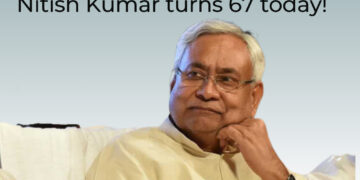RTIwala Trending: National Optical Fibre Network (NOFN) is an ambitious initiative to activate a broadband uprising in rural areas. The National Optical Fibre Network (NOFN) aims to unite all the 2, 50,000 Gram Panchayats in the country. It aims to provide 100 Mbps connectivity to all Gram Panchayats. Non-discriminatory admittance to the NOFN has been provided to all the service providers. The providers like Telecom Service Providers (TSPs), ISPs, Cable TV operators and Content providers will launch various services in rural areas. Based on NOFN experiences, BharatNet was conceived as a nationwide broadband network.
Also Read: Did You Know These Facts About 7th Pay Commission?
What is BharatNet?
[amazon_link asins=’8179306534,9352603869,014306844X,8125026517′ template=’ProductCarousel’ store=’wwwrtiwalain-21′ marketplace=’IN’ link_id=’39c241e8-c86a-11e7-afe3-5f7be9164495′]
BharatNet is a project of national importance to set up a highly scalable unit of infrastructure accessible on a non-discriminatory basis. It aims to provide on-demand, reasonable broadband connectivity of 2 Mbps to 20 Mbps for all households. The entire project is being funded by Universal Service Obligation Fund (USOF).
Also Read: Iran-Iraq earthquake: All You Need to Know
The government is starting its second and final phase of the BharatNet project on Monday (13 November 2017). The outlay is of around Rs 34,000 crore. The aim is to provide high-speed broadband in all Panchayats by March 2019. Under the project, the government aims to connect 1.5 lakh Panchayats. 10 lakh kilometers of the additional optical fiber will be used in achieving the aim. It also aims to give bandwidth to telecom players at nearly 75 percent cheaper price for broadband and wifi services in rural areas.
Under Phase 1 of the project, 1 lakh Gram Panchayats will be connected by the end of this year. Telecom operators are expected to provide at least 2 megabits per second speed to rural households. Telecom Minister Manoj Sinha, Law and IT minister Ravi Shankar Prasad and Human Resource Development Minister Prakash Javadekar will be launching the project.
[amazon_link asins=’8179306534,9352603869,014306844X,8125026517′ template=’ProductCarousel’ store=’wwwrtiwalain-21′ marketplace=’IN’ link_id=’39c241e8-c86a-11e7-afe3-5f7be9164495′]
The telecom ministry will sign agreements with seven states. The states are Maharashtra, Gujarat, Chhattisgarh, Andhra Pradesh, Telangana, Tamil Nadu, and Jharkhand. It will roll out the project on state’s own funds with partial funding from the central government.
Also Read: #GSTOverhaul & all you should need to know?
How much does BharatNet Cost to the Nation?

The total project cost of BharatNet is around Rs 45,000 crore. Out of the total amount Rs, 11,200 crores has been used for the first phase. After the rural exchange rollout in the country, this is the biggest project. The project involves domestically manufactured products for the entire project. Thus, it also advertises Make in India. The officials state that around Rs 4.5 lakh crore of value can be added to the National Gross Domestic Product on completion of BharatNet phase 2. A study has suggested that every 10 percent usage of Internet in India drives up GDP by 3.3 percent.
[amazon_link asins=’8179306534,9352603869,014306844X,8125026517′ template=’ProductCarousel’ store=’wwwrtiwalain-21′ marketplace=’IN’ link_id=’39c241e8-c86a-11e7-afe3-5f7be9164495′]
BSNL will move out optical fiber in yet to be covered locations of eight states. Assam, Haryana, Madhya Pradesh, Rajasthan, Uttar Pradesh, West Bengal, Jammu and Kashmir, and Sikkim are the states that have not been covered under the first phase of BharatNet. Power Grid Corporation of India has been awarded the contract for three states, namely, Himachal Pradesh, Uttarakhand, and Odisha. The government estimates that the second phase of BharatNet will double the existing optical fiber footprint in the country. It will generate employment of 10 crore man-days during the rollout of the project.
Also Read: Did You Know These Facts About 7th Pay Commission?
Broadband services rates are expected to be low because of intense competition in the sector. The government is offering bandwidth under the project to telecom operators at 75 percent lower rate than they currently buy it. Telecom operators like Reliance Jio, Bharti Airtel, Idea Cellular and Vodafone are interested in providing services under BharatNet.
[amazon_link asins=’8179306534,9352603869,014306844X,8125026517′ template=’ProductCarousel’ store=’wwwrtiwalain-21′ marketplace=’IN’ link_id=’39c241e8-c86a-11e7-afe3-5f7be9164495′]
India at present has 38,000 Wi-Fi hotspots. Under BharatNet phase 2, around 6-7 lakh Wi-Fi hotspots will be added to 2-5 hotspots in each Panchayats. The total Wi-Fi rollout cost is estimated to be around Rs 10,000 crore, she said. Under BharatNet phase 1, the government has set up 15,000 Wi-Fi hotspots of which around 11,000 are in rural areas and the rest in semi-rural.
















































